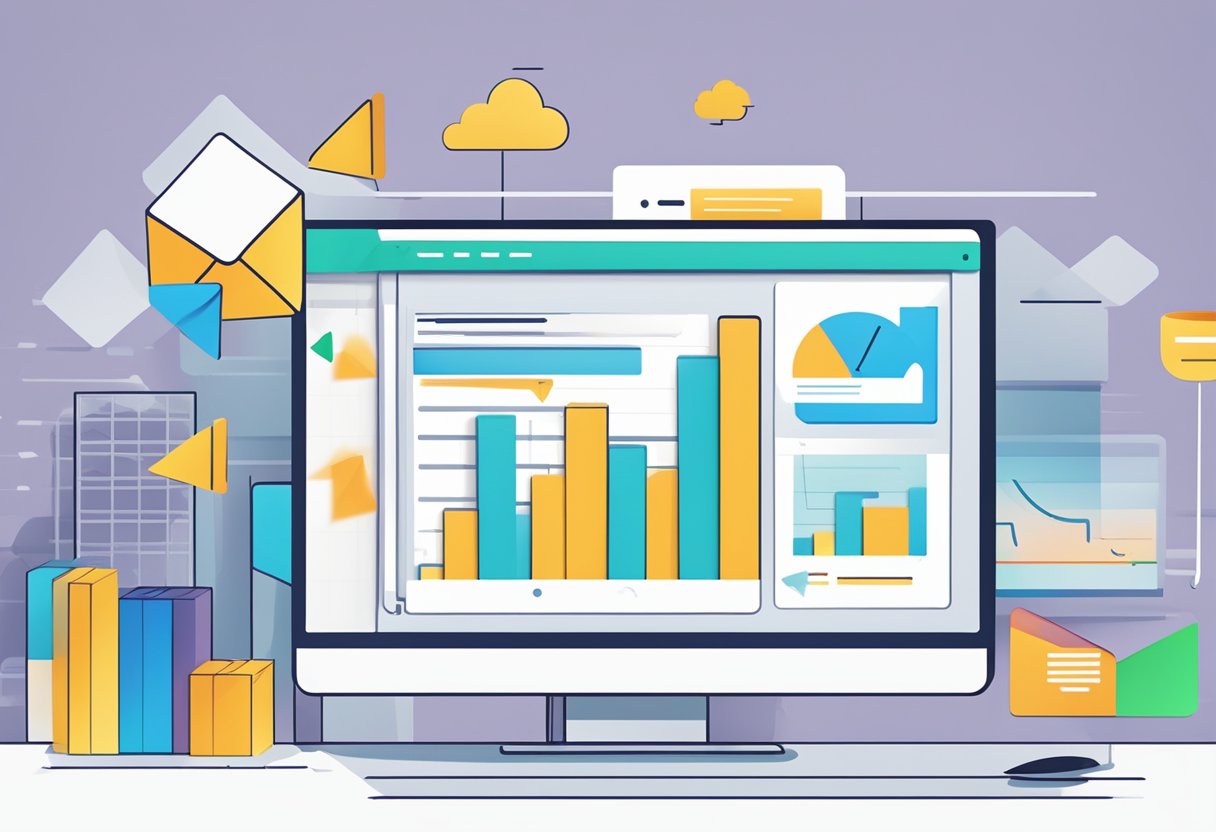Effective customer communication management (CCM) is essential for any organization that wants to build a strong relationship with its customers.
CCM involves a combination of strategy, channels, and tools that a business uses to engage and communicate with its customers. It includes how a company creates, delivers, and maintains outbound customer communications.
The fundamentals of CCM are simple. It is about providing the right information to the right person at the right time. However, in practice, CCM can be complex.
It requires a deep understanding of customer needs and preferences, as well as the ability to use data and feedback to optimize communication channels and strategies. Success in CCM can lead to increased customer satisfaction, loyalty, and revenue.
To perfect an organization’s CCM, it is important to focus on building the building blocks of effective communication, optimizing communication channels, leveraging customer data and feedback, and integrating CCM with business strategy.
By doing so, organizations can create a seamless and personalized customer experience that will drive long-term success.
Key Takeaways
- Effective CCM involves providing the right information to the right person at the right time.
- Building blocks of effective communication, optimizing communication channels, leveraging customer data and feedback, and integrating CCM with business strategy are all key to perfecting an organization’s CCM.
- Success in CCM can lead to increased customer satisfaction, loyalty, and revenue.
Fundamentals of Customer Communication Management

Understanding CCM
Customer Communication Management (CCM) is a strategy that organizations use to manage their customer communication across various channels.
It involves creating, delivering, and maintaining outbound customer communications, including invoices, statements, notices, letters, and more. CCM enables businesses to personalize and optimize their communication with customers, leading to better customer experiences.
Importance of Customer Experience
Customer experience plays a crucial role in CCM. A positive customer experience can lead to customer loyalty, repeat business, and positive word-of-mouth.
On the other hand, a negative customer experience can lead to customer churn, negative reviews, and damage to the brand’s reputation. Therefore, organizations must prioritize customer experience in their CCM strategy.
Role of Technology in CCM
Technology plays a crucial role in CCM. It enables organizations to automate and streamline their communication processes, leading to increased efficiency and cost savings.
CCM tools enable teams across the organization to share knowledge seamlessly, leading to better collaboration and communication. Some of the technologies that organizations can use for CCM include chatbots, email, live chats, and social media.
Building Blocks of Effective Communication

Effective communication is the foundation of any successful business. In customer communication management, there are several building blocks that businesses need to consider to ensure their communication strategies are effective.
Personalization and Engagement
Personalization is key to building strong relationships with customers. Customers want to feel valued and appreciated, and personalization is a way to achieve that.
By tailoring communication to each customer’s unique needs and preferences, businesses can increase engagement and build trust.
Effective personalization requires businesses to collect and analyze customer data. This data can include demographic information, purchase history, and communication preferences. With this information, businesses can create targeted communication that resonates with customers.
Consistency and Clarity
Consistency and clarity are essential for effective communication. Customers want to know what to expect from a business, and consistent communication helps to establish that trust.
Businesses should strive to maintain a consistent tone, messaging, and branding across all communication channels.
Clarity is equally important. Customers should be able to understand the message without confusion. Using plain language, avoiding jargon, and breaking down complex ideas into simple terms can help ensure that communication is clear and easy to understand.
Empathy and Transparency
Empathy and transparency are two critical components of effective communication. Empathy involves understanding and relating to the customer’s perspective and emotions.
By showing empathy, businesses can build stronger relationships with customers and create a more positive experience.
Transparency is equally important. Customers want to know what is happening, why it is happening, and what they can expect. Being transparent about business practices, product information, and communication can help build trust and credibility with customers.
Optimizing Communication Channels

When it comes to customer communication management, optimizing communication channels is a crucial aspect. It involves identifying the most effective channels to reach out to customers and engaging with them in a way that aligns with their preferences.
Digital Platforms and Social Media
In today’s digital age, social media is an essential communication channel for organizations to connect with their customers.
With billions of active users on various social media platforms, businesses can engage with their customers and build a strong online presence.
Organizations can utilize social media to share information about their products and services, address customer concerns, and respond to feedback.
Digital platforms such as chatbots, messaging apps, and video conferencing can also be effective communication channels. They provide customers with quick and convenient ways to communicate with organizations and receive support.
Chatbots, for instance, can be programmed to answer frequently asked questions, freeing up customer service representatives to handle more complex issues.
Emails and Phone Calls
Emails and phone calls remain popular communication channels for organizations to reach out to their customers.
Emails can be used to send newsletters, promotional offers, and product updates. They are also an effective way to follow up with customers who have shown interest in a product or service.
Phone calls, on the other hand, provide a more personal touch and allow organizations to build stronger relationships with their customers. They are particularly useful for handling complex issues that require immediate attention and cannot be resolved through other channels.
Self-Service and Live Support
Self-service portals and knowledge bases are becoming increasingly popular communication channels for organizations.
They provide customers with instant access to information and support, reducing the need for them to contact customer service representatives.
Organizations can create comprehensive knowledge bases that address common customer concerns and provide step-by-step guides on how to use their products or services.
Live support channels such as live chat and video conferencing can provide customers with real-time assistance and support. They are particularly useful for handling complex issues that require immediate attention and cannot be resolved through other channels.
Leveraging Customer Data and Feedback

One of the most important aspects of customer communication management is leveraging customer data and feedback.
By collecting and analyzing customer data, organizations can gain valuable insights into their customers’ preferences, needs, and behaviors. This information can then be used to tailor communications and improve the overall customer experience.
Customer Segmentation
One way to leverage customer data is through customer segmentation. This involves dividing customers into groups based on shared characteristics, such as demographics, behavior, or preferences.
By segmenting customers, organizations can create targeted communications that are more relevant and personalized.
Surveys and Customer Feedback
Another way to collect customer data and feedback is through surveys and other feedback mechanisms. Surveys can be used to gather information about customer satisfaction, preferences, and needs.
This information can then be used to improve products, services, and customer communications.
Privacy and Security Considerations
When collecting and using customer data, it is important for organizations to consider privacy and security concerns.
This includes ensuring that customer data is collected and stored securely, and that customer privacy is respected. Organizations should also be transparent about how customer data is being used, and give customers the option to opt out of data collection if they choose.
Integrating CCM with Business Strategy

Customer Communication Management (CCM) is a crucial component of a business’s overall strategy. By integrating CCM with business strategy, companies can achieve their goals of customer retention, loyalty, and revenue growth.
CCM Strategy and Business Goals
A well-defined CCM strategy can help a company align its communication efforts with its business goals.
By identifying the target audience and their communication preferences, companies can tailor their communication to meet their customers’ needs. This can lead to improved customer satisfaction and loyalty, which are essential for achieving business goals.
Customer Retention and Loyalty
CCM can help companies retain customers by providing them with relevant and timely communication.
By using customer data to create personalized communication, companies can build stronger relationships with their customers. This can lead to increased customer loyalty and repeat business.
Revenue Growth Through CCM
CCM can also help companies increase revenue by improving customer engagement and satisfaction.
By delivering targeted communication that meets customers’ needs, companies can increase the likelihood of customers making purchases.
Additionally, by using CCM to cross-sell and upsell products and services, companies can increase their revenue per customer.
In conclusion, integrating CCM with business strategy can help companies achieve their goals of customer retention, loyalty, and revenue growth.
By developing a well-defined CCM strategy and tailoring communication to meet customers’ needs, companies can build stronger relationships with their customers and increase their revenue.



